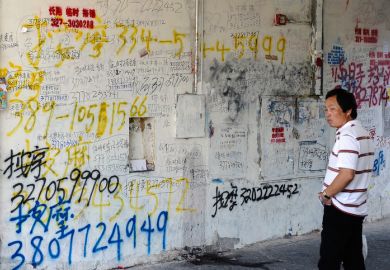Scholars have largely written universities out of urban history,” writes LaDale Winling. This statement is manifestly untrue of Europe, as the late Peter Hall, among others, has published extensively about their impact on place. Yet having said this, Building the Ivory Tower is a fascinating book. It charts the impact of university development on cities in the US, using a series of typological case studies to illustrate the transformation of what Winling calls “the landscape of knowledge”. In doing so, he emphasises “the interaction between the elites and the grassroots…combining both a ‘top-down’ and ‘bottom-up’ perspective”, bringing together his extensive historical research, a few good stories and some very useful maps he has drawn himself.
Men and women in the early universities were treated very differently, with women subject to stringent rules and curfews quite unlike those applied to the men. The universities were very much in loco parentis, safeguarding morals. Space was used to reinforce divisions between the sexes.
The chronological chapters are developed around a series of loose themes starting with the inauguration of Ball State University in Indiana, which had its origins in a chance real estate venture that would transform the fortunes of the town of Muncie. Then we move on to the University of Texas in Austin, a town that identified with the Confederate South. Here a model for a new kind of sprawling, racially and class-segregated metropolis – for a time complicit in the Jim Crow laws – was created.
The theme of division continues with the manipulative political strategies of the University of Chicago, which became a big player in urban planning by capitalising on federal funding in the 1950s. Finally, the relationship between the creative classes, gentrification and innovation is explored in Cambridge, Massachusetts. This provides a salutary lesson about the havoc that can be caused to a city when a university, in this case Harvard, overreaches itself financially. The book also touches on the relationship between rent, talent and innovation, which is a serious problem on both sides of the Atlantic.
This is a remarkably timely book that needs to be read by any university in expansionist mode. “The expanding city of knowledge”, writes Winling, “remains a highly contested form, bringing conflict and creative destruction to the communities that must negotiate the new cultural, social, and economic opportunities of higher education and the information society.” Universities often favour the shiny and new, as a brassy symbol of “innovation”, over sensitive, sustainable and incremental reuse. A great deal of bureaucracy goes into ensuring that the activity of academics is ethically up to par: shouldn’t that apply to their estates departments as well?
Flora Samuel is professor of architecture in the built environment, University of Reading.
Building the Ivory Tower: Universities and Metropolitan Development in the Twentieth Century
By LaDale C. Winling
University of Pennsylvania Press
264pp, £33.00
ISBN 9780812249682
Published 13 October 2017
POSTSCRIPT:
Print headline: No campus is an island entire of itself
Register to continue
Why register?
- Registration is free and only takes a moment
- Once registered, you can read 3 articles a month
- Sign up for our newsletter
Subscribe
Or subscribe for unlimited access to:
- Unlimited access to news, views, insights & reviews
- Digital editions
- Digital access to THE’s university and college rankings analysis
Already registered or a current subscriber?






